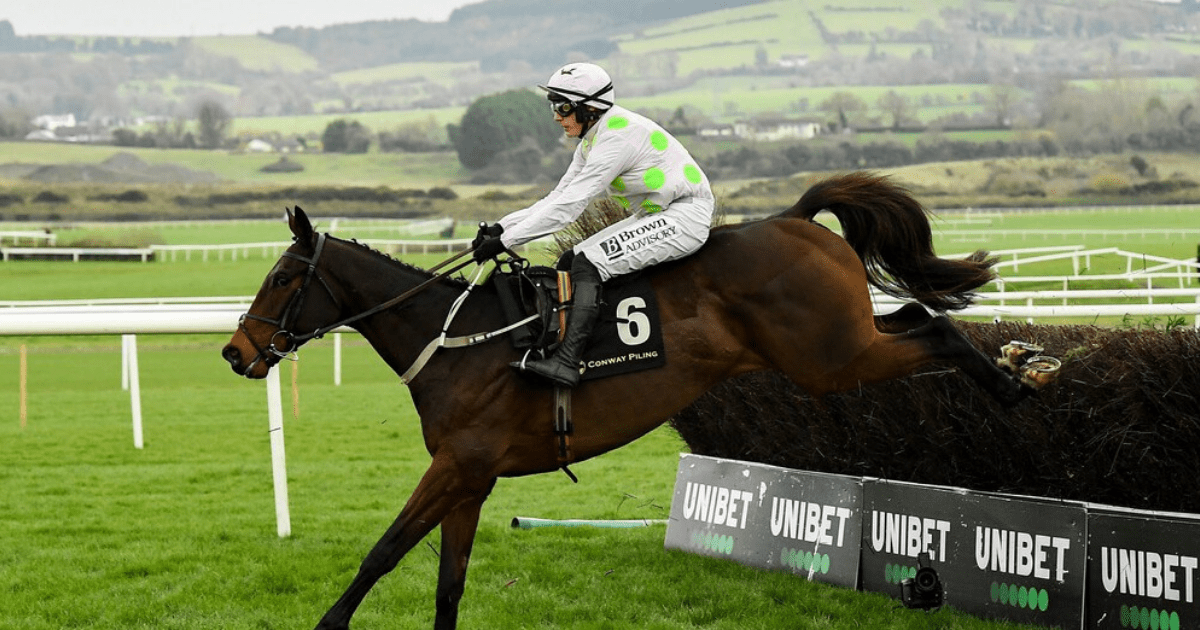THERE are SIX horses less than 2-1 in the betting to win this year.
A £10 accumulator on all six pays £680 if they all do the business.
Gaelic Warrior is 0-2 at Cheltenham Festival
However, you just know one will let you down. Here’s who will be top of the pops . . . and king of the flops!
MARINE NATIONALE
(5-4 for the Arkle)
WON last year’s Supreme with plenty in hand. Looked a natural on chasing debut at Leopardstown. Bags of class, brilliant in last year’s Supreme. If he jumps, he wins. Simples. BANKER
CONSTITUTION HILL
(1-3 Champion Hurdle)
YET to be tested, let alone beaten . . . Won the Champion last year by nine lengths with his only scare when taking off a stride too early at the final flight. Impossible to oppose. BANKER
EL FABIOLO (5-6 Champion Chase)
POWERFUL win in last year’s Arkle where he had market rival Jonbon five lengths behind. Nothing flashy about his return in the Hilly Way Chase at Cork but there will be even more to come as he gets his fitness edge this season. BANKER
GAELIC WARRIOR
(5-4 Turners Novices’ Chase)
TALENTED and looks a better chaser than hurdler. Runner-up at the last two Festivals and seems to have a preference for right handed tracks. Risky bet at short odds. BUST
GALOPIN DES CHAMPS
(6-5 Gold Cup)
REIGNING champ. Beaten on next two starts, but roared back to form in the Savills Chase over Christmas. That victory suggests every other runner will be racing for second. BANKER
DINOBLUE (6-4 Mares’ Chase)
IMPROVING mare jumped well when winning her first Grade 1 at Leopardstown last month. Has the option of the Champion Chase, but will surely go for this easier contest. BANKER
Festival punt
LET’s keep things simple this weekend.
The Stayers’ Hurdle looks like a match-up between French star THELEME and Irish ace TEAHUPOO.
So let’s have £20 win on each of the raiders at 4-1.
BANBRIDGE is our Ryanair fancy. He has his first run of the season at Kempton today and he’ll shorten up for the Festival if he goes close. A fiver each-way at 10-1 please.
Frequently Asked Questions
How can I prepare my horse for racing?
The process of conditioning a racehorse involves a gradual progression that includes both long, slow distances for building stamina, and shorter, more intense workouts to increase speed. Over time, the horse’s cardiovascular system and musculature must be strengthened through an exercise program that simulates racing without causing injuries or undue strain.
How important is a horse’s pedigree when it comes to winning races?
The pedigree of a racing horse can indicate its potential, but it isn’t the only thing that determines their success. Although a horse’s lineage can indicate an inherited aptitude for endurance or speed, other factors, such as health and temperament, are also important. A horse’s natural ability can be maximized by good training, and it may even outperform horses with impressive pedigrees.
How often is it recommended that racehorses are trained?
Racehorses’ training frequency is determined by the horse, his level of fitness and racing schedule. They would usually have a daily regimen consisting of walking, trotting and cantering with more intense work like galloping and breezing a few times a week in order to build speed and stamina. Rest days help the horse recover and avoid overtraining.
Are there different race training methods for different horse breeds?
As breed characteristics and race distances vary, so can the training methods for horses. Thoroughbreds are often associated with flat-track racing over long distances. They receive different training than Quarter Horses who specialize in sprinting. Each breed is unique and requires a different approach to match their physical characteristics and behaviors.
What is the best diet for a race horse?
A racehorse diet must be of the highest quality and balanced precisely to meet their energetic requirements for training and racing. It usually includes a combination high-quality hays, grains (such as oats or barsley) and commercially made feeds for racehorses. The diet should also be supplemented by essential vitamins and mineral to promote overall health and performance.
What is the first training step for a racehorse?
During the first phase of racing a horse, there is a critical “breaking” stage where the horses become accustomed with a saddle, bridle or the weight from a rider. In these early sessions patience and gentle treatment are essential to ensure that the horse becomes comfortable with humans and the equipment he will wear during his racing career.
Statistics
- Research has found that a racehorse’s stride length can increase by up to 7% following specific strength and conditioning programs.
- Racehorse mortality rates during racing have been observed to be between 1.5 to 2 deaths per thousand starts, depending on the racing jurisdiction.
- Around 80% of thoroughbred racehorses begin their racing careers by the age of two, according to industry estimates.
- The Injury Database from The Jockey Club reports that synthetic racing surfaces have a lower horse fatality rate than dirt tracks, with a statistically significant difference of 1.2 fatalities per thousand starts on synthetics compared to 2.0 on dirt tracks.
- Studies suggest that proper early training can reduce the risk of musculoskeletal injuries in racehorses by up to 50%.
- Statistically, less than 1% of thoroughbred foals born each year will go on to win a stakes race.
External Links
horseracing.com
theridinginstructor.net
thoroughbred-racing.net
keeneland.com
equibase.com
bloodhorse.com
How To
How To Cool Down a Racehorse After a Workout
Post-exercise, it’s vital to adequately cool down a racehorse to prevent muscle stiffness and support recovery. Slowly walk the horse on a long lead to lower its respiratory and heart rates. This is the time to check for any signs that your horse may be in distress or injured. Continue with gentle stretching for the neck and legs. Finalize by grooming the horses to relax their muscles and checking for any cuts, abrasions or other injuries.

